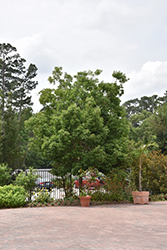Fri & Sat 8am - 8pm
Sun 8am - 7pm
Anytown, USA 12345
fax: 261.787.0463
e-mail: info@successgc.com


Plant Finder

Height: 50 feet
Spread: 40 feet
Sunlight:
![]()
Hardiness Zone: 6b
Other Names: syn. Lithocarpus glabra
Description:
This warm-temperate, deciduous variety matures into a medium sized tree with leathery, dark green leaves; can be maintained as an accent or screening plant; a nice color addition to the landscape
Ornamental Features
Japanese Oak is primarily valued in the landscape for its ornamental upright and spreading habit of growth. It has attractive dark green deciduous foliage. The pointy leaves are highly ornamental but do not develop any appreciable fall color. However, the fruit can be messy in the landscape and may require occasional clean-up.
Landscape Attributes
Japanese Oak is a deciduous tree with an upright spreading habit of growth. Its relatively coarse texture can be used to stand it apart from other landscape plants with finer foliage.
This is a relatively low maintenance tree, and is best pruned in late winter once the threat of extreme cold has passed. It is a good choice for attracting birds, bees and squirrels to your yard. It has no significant negative characteristics.
Japanese Oak is recommended for the following landscape applications;
- Shade
- Vertical Accent
- Hedges/Screening
- Windbreaks and Shelterbelts
- Naturalizing And Woodland Gardens
Planting & Growing
Japanese Oak will grow to be about 50 feet tall at maturity, with a spread of 40 feet. It has a low canopy with a typical clearance of 4 feet from the ground, and should not be planted underneath power lines. It grows at a medium rate, and under ideal conditions can be expected to live to a ripe old age of 100 years or more; think of this as a heritage tree for future generations!
This tree should only be grown in full sunlight. It does best in average to evenly moist conditions, but will not tolerate standing water. It is not particular as to soil type or pH. It is somewhat tolerant of urban pollution. This species is not originally from North America.
